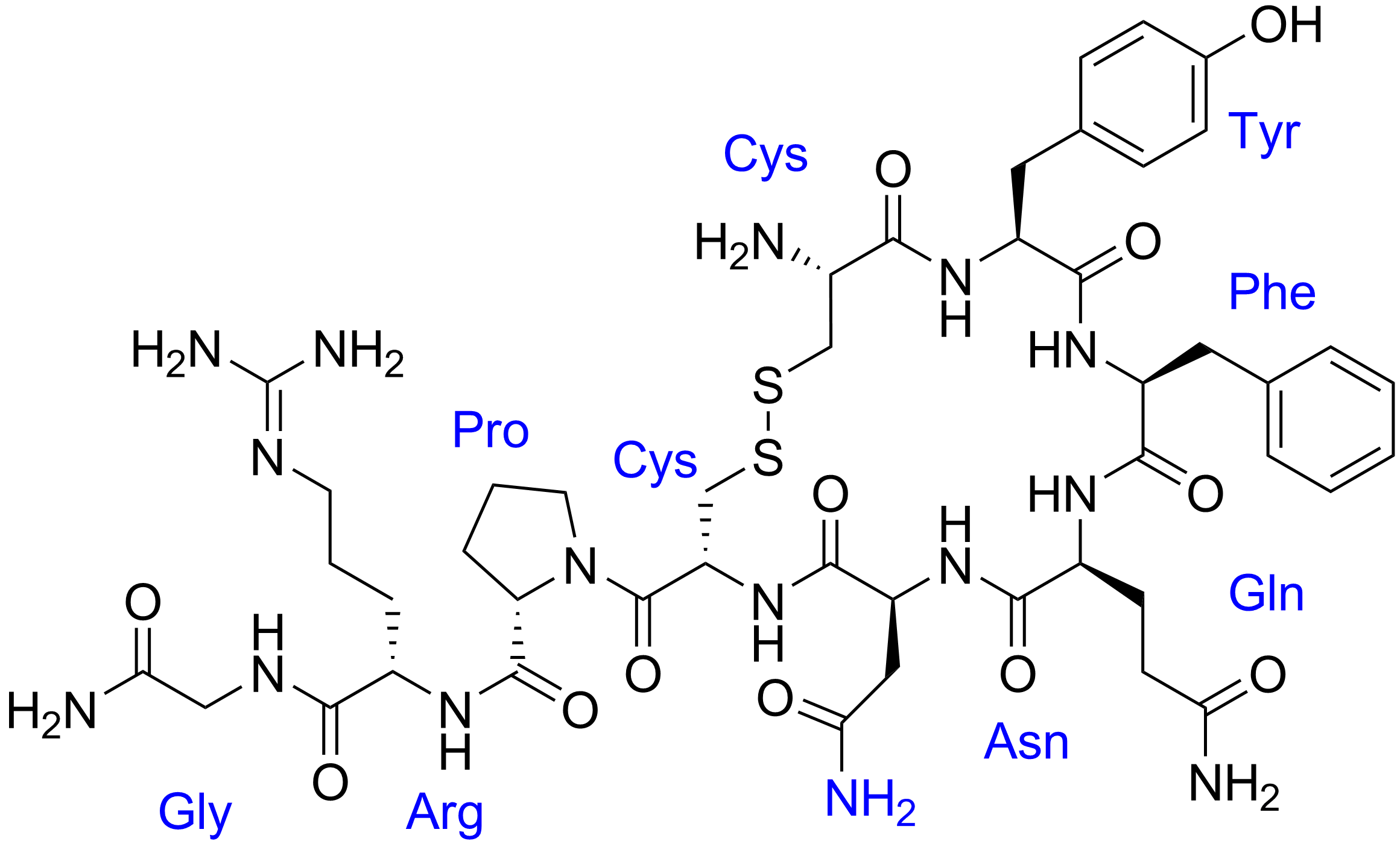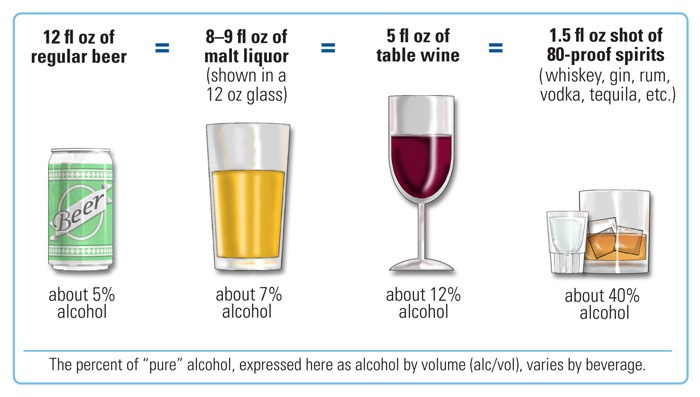|
Alcohol And Health
Alcohol (also known as ethanol) has a number of effects on health. Short-term effects of alcohol consumption include intoxication and dehydration. Long-term effects of alcohol include changes in the metabolism of the liver and brain, several types of cancer and alcohol use disorder. Alcohol intoxication affects the brain, causing slurred speech, clumsiness, and delayed reflexes. Alcohol consumption can cause hypoglycemia in diabetics on certain medications, such as insulin or sulfonylurea, by blocking gluconeogenesis. There is an increased risk of developing an alcohol use disorder for teenagers while their brain is still developing. Adolescents who drink have a higher probability of injury including death. Even light and moderate alcohol consumption have negative effects on health, such as by increasing a person's risk of developing several cancers. A 2014 World Health Organization report found that harmful alcohol consumption caused about 3.3 million deaths annually worldwide. N ... [...More Info...] [...Related Items...] OR: [Wikipedia] [Google] [Baidu] |
Alcohol (drug)
Alcohol, sometimes referred to by the chemical name ''ethanol'', is a depressant drug that is the active ingredient in drinks such as beer, wine, and distilled spirits (hard liquor). It is one of the oldest and most commonly consumed recreational drugs, causing the characteristic effects of alcohol intoxication ("drunkenness"). Among other effects, alcohol produces happiness and euphoria, decreased anxiety, increased sociability, sedation, impairment of cognitive, memory, motor, and sensory function, and generalized depression of central nervous system (CNS) function. Ethanol is only one of several types of alcohol, but it is the only type of alcohol that is found in alcoholic beverages or commonly used for recreational purposes; other alcohols such as methanol and isopropyl alcohol are significantly more toxic. A mild, brief exposure to isopropanol, being only moderately more toxic than ethanol, is unlikely to cause any serious harm. Methanol, being profoundly more t ... [...More Info...] [...Related Items...] OR: [Wikipedia] [Google] [Baidu] |
Cancer
Cancer is a group of diseases involving abnormal cell growth with the potential to invade or spread to other parts of the body. These contrast with benign tumors, which do not spread. Possible signs and symptoms include a lump, abnormal bleeding, prolonged cough, unexplained weight loss, and a change in bowel movements. While these symptoms may indicate cancer, they can also have other causes. Over 100 types of cancers affect humans. Tobacco use is the cause of about 22% of cancer deaths. Another 10% are due to obesity, poor diet, lack of physical activity or excessive drinking of alcohol. Other factors include certain infections, exposure to ionizing radiation, and environmental pollutants. In the developing world, 15% of cancers are due to infections such as '' Helicobacter pylori'', hepatitis B, hepatitis C, human papillomavirus infection, Epstein–Barr virus and human immunodeficiency virus (HIV). These factors act, at least partly, by changing the genes o ... [...More Info...] [...Related Items...] OR: [Wikipedia] [Google] [Baidu] |
Hormone
A hormone (from the Greek participle , "setting in motion") is a class of signaling molecules in multicellular organisms that are sent to distant organs by complex biological processes to regulate physiology and behavior. Hormones are required for the correct development of animals, plants and fungi. Due to the broad definition of a hormone (as a signaling molecule that exerts its effects far from its site of production), numerous kinds of molecules can be classified as hormones. Among the substances that can be considered hormones, are eicosanoids (e.g. prostaglandins and thromboxanes), steroids (e.g. oestrogen and brassinosteroid), amino acid derivatives (e.g. epinephrine and auxin), protein or peptides (e.g. insulin and CLE peptides), and gases (e.g. ethylene and nitric oxide). Hormones are used to communicate between organs and tissues. In vertebrates, hormones are responsible for regulating a variety of physiological processes and behavioral activities such as diges ... [...More Info...] [...Related Items...] OR: [Wikipedia] [Google] [Baidu] |
Hypothalamus
The hypothalamus () is a part of the brain that contains a number of small nuclei with a variety of functions. One of the most important functions is to link the nervous system to the endocrine system via the pituitary gland. The hypothalamus is located below the thalamus and is part of the limbic system. In the terminology of neuroanatomy, it forms the ventral part of the diencephalon. All vertebrate brains contain a hypothalamus. In humans, it is the size of an almond. The hypothalamus is responsible for regulating certain metabolic processes and other activities of the autonomic nervous system. It synthesizes and secretes certain neurohormones, called releasing hormones or hypothalamic hormones, and these in turn stimulate or inhibit the secretion of hormones from the pituitary gland. The hypothalamus controls body temperature, hunger, important aspects of parenting and maternal attachment behaviours, thirst, fatigue, sleep, and circadian rhythms. Structure Th ... [...More Info...] [...Related Items...] OR: [Wikipedia] [Google] [Baidu] |
Vasopressin
Human vasopressin, also called antidiuretic hormone (ADH), arginine vasopressin (AVP) or argipressin, is a hormone synthesized from the AVP gene as a peptide prohormone in neurons in the hypothalamus, and is converted to AVP. It then travels down the axon terminating in the posterior pituitary, and is released from vesicles into the circulation in response to extracellular fluid hypertonicity ( hyperosmolality). AVP has two primary functions. First, it increases the amount of solute-free water reabsorbed back into the circulation from the filtrate in the kidney tubules of the nephrons. Second, AVP constricts arterioles, which increases peripheral vascular resistance and raises arterial blood pressure. A third function is possible. Some AVP may be released directly into the brain from the hypothalamus, and may play an important role in social behavior, sexual motivation and pair bonding, and maternal responses to stress. Vasopressin induces differentiation of ... [...More Info...] [...Related Items...] OR: [Wikipedia] [Google] [Baidu] |
Vomiting
Vomiting (also known as emesis and throwing up) is the involuntary, forceful expulsion of the contents of one's stomach through the mouth and sometimes the nose. Vomiting can be the result of ailments like food poisoning, gastroenteritis, pregnancy, motion sickness, or hangover; or it can be an after effect of diseases such as brain tumors, elevated intracranial pressure, or overexposure to ionizing radiation. The feeling that one is about to vomit is called nausea; it often precedes, but does not always lead to vomiting. Impairment due to alcohol or anesthesia can cause inhalation of vomit, leading to suffocation. In severe cases, where dehydration develops, intravenous fluid may be required. Antiemetics are sometimes necessary to suppress nausea and vomiting. Self-induced vomiting can be a component of an eating disorder such as bulimia, and is itself now classified as an eating disorder on its own, purging disorder. Complications Aspiration Vomiting is dan ... [...More Info...] [...Related Items...] OR: [Wikipedia] [Google] [Baidu] |
Blood Alcohol Content
Blood alcohol content (BAC), also called blood alcohol concentration or blood alcohol level, is a measurement of alcohol intoxication used for legal or medical purposes; it is expressed as mass of alcohol per volume or mass of blood. For example, a BAC of 0.10 by (0.10% or one tenth of one percent) means that there is 0.10 g of alcohol for every 100 mL of blood, which is the same as 21.7 mmol/L. A BAC of 0.10 by (0.10%) is 0.10 g of alcohol per 100 g of blood (23 mmol/L). A BAC of 0.0 is sober; in different countries the maximum permitted BAC when driving ranges from about 0.04% to 0.08%; BAC levels over 0.08% are considered very impaired; above 0.4% is potentially fatal. Effects by alcohol level Estimation by intake Blood alcohol content can be estimated by a method developed by Swedish professor in the 1920s: :EBAC = \frac\times100\%-\beta\times T where: * is the mass of alcohol consumed. * is the ratio of body water to total weight. It v ... [...More Info...] [...Related Items...] OR: [Wikipedia] [Google] [Baidu] |
Median Lethal Dose
In toxicology, the median lethal dose, LD50 (abbreviation for "lethal dose, 50%"), LC50 (lethal concentration, 50%) or LCt50 is a toxic unit that measures the lethal dose of a toxin, radiation, or pathogen. The value of LD50 for a substance is the dose required to kill half the members of a tested population after a specified test duration. LD50 figures are frequently used as a general indicator of a substance's acute toxicity. A lower LD50 is indicative of increased toxicity. The test was created by J.W. Trevan in 1927. The term semilethal dose is occasionally used in the same sense, in particular with translations of foreign language text, but can also refer to a sublethal dose. LD50 is usually determined by tests on animals such as laboratory mice. In 2011, the U.S. Food and Drug Administration approved alternative methods to LD50 for testing the cosmetic drug Botox without animal tests. Conventions The LD50 is usually expressed as the mass of substance administered per ... [...More Info...] [...Related Items...] OR: [Wikipedia] [Google] [Baidu] |
Belfast Telegraph
The ''Belfast Telegraph'' is a daily newspaper published in Belfast, Northern Ireland, by Independent News & Media. Its editor is Eoin Brannigan. Reflecting its unionist tradition, the paper has historically been "favoured by the Protestant population", while also being read within Catholic nationalist communities in Northern Ireland. History It was first published as the ''Belfast Evening Telegraph'' on 1 September 1870 by brothers William and George Baird. Its first edition cost half a penny and ran to four pages covering the Franco-Prussian War and local news. The evening edition of the newspaper was originally called the "Sixth Late", and "Sixth Late Tele" was a familiar cry made by vendors in Belfast city centre in the past. Local editions were published for distribution to Enniskillen, Dundalk, Newry and Derry. Its competitors are '' The News Letter'' and ''The Irish News'', and local editions of London-based red tops also compete in this market, in some cases sellin ... [...More Info...] [...Related Items...] OR: [Wikipedia] [Google] [Baidu] |
Alcohol And Cancer
Alcohol causes cancers of the oesophagus, liver, breast, colon, oral cavity, rectum, pharynx and laryngeal cancers, and probably causes cancers of the pancreas. Consumption of alcohol in any quantity can cause cancer. The more alcohol is consumed, the higher the cancer risk. Alcoholic beverages were classified as a Group 1 carcinogen by the International Agency for Research on Cancer (IARC) in 1988. 3.6% of all cancer cases and 3.5% of cancer deaths worldwide are attributable to consumption of alcohol (more specifically, acetaldehyde, a derivative of ethanol). 740,000 cases of cancer in 2020 or 4.1% of new cancer cases were attributed to alcohol. Alcohol is thought to cause cancer through three main mechanisms: # DNA methylation # Oxidative stress # Hormonal alteration as well as secondary mechanisms of liver cirrhosis, microbiome dysbiosis, reduced immune system function, retinoid metabolism, increased levels of inflammation, 1-Carbon metabolism and disruption of fola ... [...More Info...] [...Related Items...] OR: [Wikipedia] [Google] [Baidu] |
Alcohol Packaging Warning Messages
Alcohol packaging warning messages (AWLs) are warning messages that appear on the packaging of alcoholic drinks concerning their health effects. They have been implemented in an effort to enhance the public's awareness of the harmful effects of consuming alcoholic beverages, especially with respect to foetal alcohol syndrome and alcohol's carcinogenic properties. In general, warnings used in different countries try to emphasize the same messages (see By country). Such warnings have been required in alcohol advertising for many years, although the content of the warnings differ by nation. A World Health Organization report, published in 2017, stated: A 2014 study in '' BMC Public Health'' concluded that "Cancer warning statements on alcoholic beverages constitute a potential means of increasing awareness about the relationship between alcohol consumption and cancer risk." History Increasing calls for the introduction of warning labels on alcoholic beverages have occur ... [...More Info...] [...Related Items...] OR: [Wikipedia] [Google] [Baidu] |







